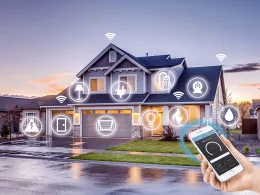Introduction
Voice technology is becoming a big part of daily life. From smart assistants that help us manage tasks to voice shopping platforms, these tools are changing how we interact with technology. As speech recognition and AI improve, voice-activated systems are making life easier and more accessible. This article looks at how voice technology is used daily, the benefits it brings, and the challenges it faces. We’ll also explore how it boosts productivity and changes digital experiences, paving the way for a future where communication is simpler and more efficient.
What Is Voice Technology?

Voice technology lets devices understand and respond to spoken commands. It uses speech recognition and natural language processing to interpret human language. Smart assistants like Amazon Alexa, Google Assistant, and Apple Siri are great examples. With these, users can do things like set reminders, check the weather, or control smart devices just by speaking. This technology makes using devices easier and more natural. By using conversational AI, voice tech also learns from users and gets better over time, making communication between people and machines smoother.
What Is Voice Commerce?

Voice commerce is a new trend that lets consumers shop and make purchases using voice commands. It uses voice technology to make shopping easier, allowing users to search for products, compare prices, and complete transactions without needing to touch a screen. Voice commerce depends on speech recognition and conversational AI to understand requests and process payments safely. As online shopping grows, voice commerce is set to play a bigger role in retail, offering a hands-free, personalized, and efficient way to shop in today’s digital world.
The Rise of Smart Assistants

Smart assistants are leading the way in voice technology. Devices like Amazon Alexa, Google Assistant, and Apple Siri have become common in many homes by providing hands-free help with everyday tasks. They can set reminders, manage calendars, control smart devices, play music, and answer questions. These devices are designed to make life easier by offering a natural way to interact with technology. As we rely more on digital voice solutions, smart assistants are changing how we work, relax, and communicate, making them essential in today’s connected world.
How Voice Technology Works

Voice technology starts with a microphone picking up the user’s voice and turning it into digital data. This data is processed by speech recognition algorithms, which convert the spoken words into text. Next, natural language processing tools analyze the text to understand the meaning behind the command. Finally, the system carries out the command, like finding information, playing music, or making a voice commerce purchase. This smooth connection of hardware and software gets better over time, thanks to improvements in AI voice models, making interactions more accurate and personal.
Benefits of Voice Technology in Everyday Life
Voice technology makes life easier in many ways. It’s convenient and helps with tasks like setting alarms, sending messages, and playing music quickly. Speaking commands feels more natural than typing, making everything faster. It’s also great for accessibility. Voice recognition helps people with disabilities use technology more easily. This makes it simpler for everyone to access information and get things done without typing.Voice shopping is another advantage. People can search for products and buy them hands-free, making shopping easier and more enjoyable. Businesses use voice tech to offer more personalized services.
Real-World Applications of Voice Technology

Voice technology is changing life at home and work. At home, smart assistants control lights, thermostats, and security. This makes smart homes easier to use. At work, voice devices help with calls, schedules, and tasks. They also make remote work smoother.
In shopping, voice commands let people browse, compare, and buy products. This makes online shopping faster and easier. Businesses use this to improve customer service.
In healthcare, voice technology helps with patient records, appointments, and even diagnoses. In education, AI-powered voices make learning more fun and interactive. This helps students of all ages stay engaged.
Tips for Embracing Voice Technology

If you want to add voice technology to your daily life, start by exploring different smart assistants. Find the one that suits your needs best. Try out all the features to see how voice recognition and AI can make things easier for you.
It’s also important to set limits on your technology use. Voice devices make life more convenient, but too much screen time can cause stress. Schedule regular breaks from technology and try a digital detox to stay healthy and balanced.
For businesses, it’s key to invest in secure, easy-to-use voice technology. Choose platforms that protect data and are simple to operate. Encourage your team to use voice commands to improve productivity. Stay updated on the latest voice tech trends to stay ahead and make the most of what’s available.
Challenges and Considerations
Even though voice technology offers many benefits, it also comes with challenges. Privacy and security are major concerns. Voice systems often need personal data to work, so it’s important to keep that data safe to build trust with users.
Another issue is accuracy. Different accents, dialects, and background noise can affect how well smart assistants understand commands. This can lead to mistakes and frustration. To fix this, improvements in natural language processing are needed to make voice recognition more accurate.
Also, there’s a learning curve for some users. While many people enjoy the convenience of voice commands, others may have trouble getting used to it. Making devices easier to use and offering educational resources will help more people adopt voice technology.
The Future of Voice Technology

The future of voice technology looks exciting. Smarter AI and better language processing will make voice assistants more accurate and personal. These improvements will help voice devices fit smoothly into daily life. Voice shopping will also grow. More stores will offer voice-activated shopping. As people get used to buying with voice commands, businesses will find new ways to personalize service. Better global internet will make voice technology easier to access. This will help close the digital divide so more people can benefit.
These changes will make life easier and create new opportunities. Companies that use voice technology can stay ahead in a more connected world.
Comparative Table: Key Aspects of Voice Technology
| Aspect | Description | Impact |
|---|---|---|
| Smart Assistants | Devices that respond to voice commands for scheduling, information, and control of smart home systems | Enhance productivity, streamline daily routines, improve accessibility |
| Voice Commerce | Enables shopping and transactions through voice commands | Simplifies purchasing process, personalizes shopping experience, drives innovation in retail |
| Speech Recognition | Technology that converts spoken language into text | Improves accessibility, increases efficiency in device interaction |
| Conversational AI | AI systems that allow natural, intuitive communication between users and devices | Enhances user experience, supports personalized responses, drives engagement |
| Natural Language Processing | Enables machines to understand and process human language effectively | Increases accuracy, improves interaction quality, supports advanced voice functions |
Conclusion
In summary, voice technology is transforming everyday life by integrating smart assistants and voice commerce into our daily routines. This evolution is driven by advancements in speech recognition and conversational AI, which offer unprecedented convenience, accessibility, and personalization. As we embrace this digital revolution, the benefits of voice technology extend beyond productivity to improve overall user experience and connectivity. By overcoming challenges and leveraging innovation, we can create a more seamless, interactive future in a hyperconnected world.










